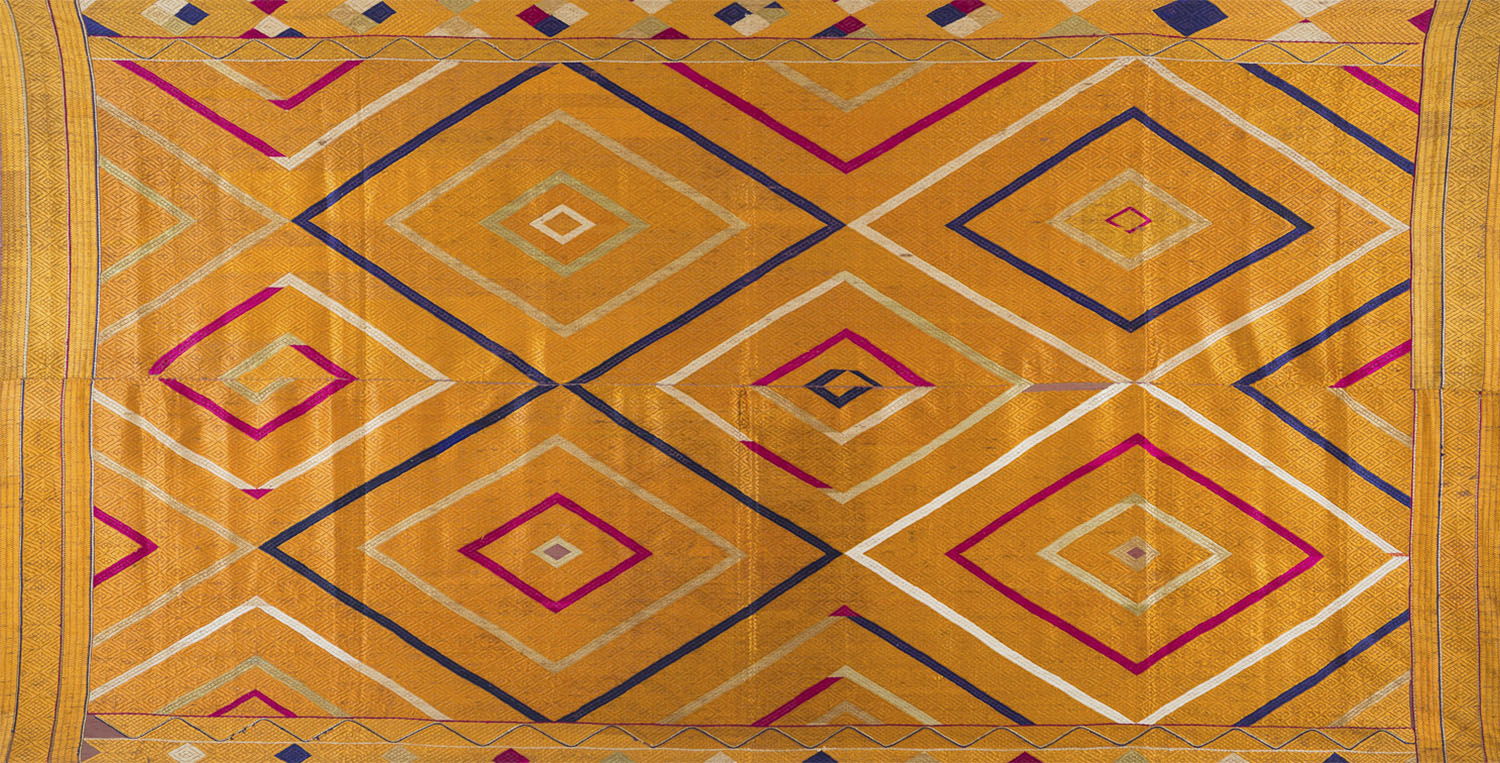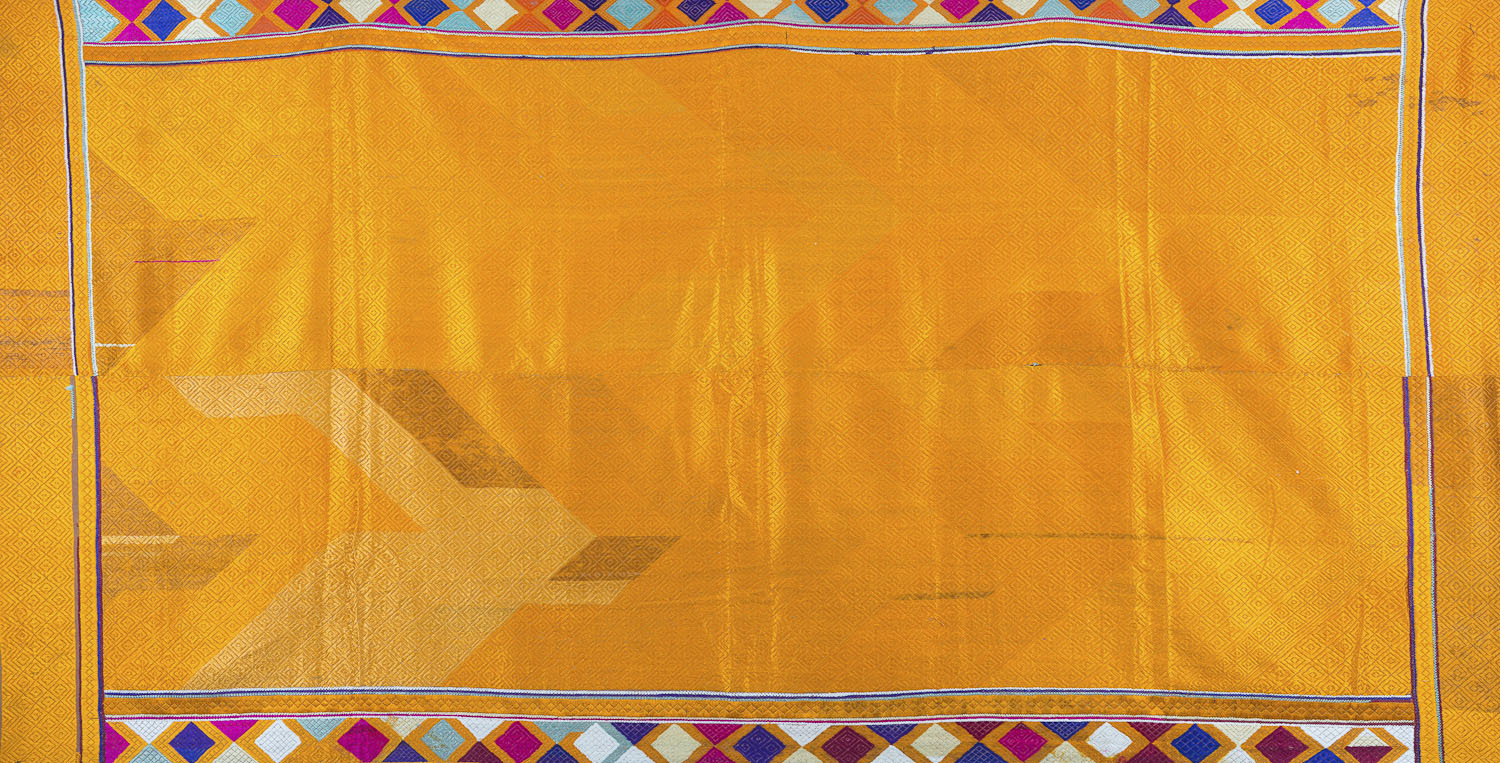ARTICLE
Vari Da Bagh
Featuring rich bagh embroidery, vari da bagh is a type of chaddar or shawl used in Punjabi wedding ceremonies, its name translating literally to ‘garden of the wedding trousseau’. This bagh from north India has a main field embroidered with gold-coloured silk thread, while the borders are made with a variety of colours. Thin gaps are left between the shapes so that the red base fabric, either chaunsa khaddar or halwan, shows through as an outline. The design is composed entirely of geometric forms, the central field typically embroidered with repeating concentric diamond shapes, with a complementary pattern of diamonds and zigzag lines along the borders. While vari da bagh designs often feature a repeating block of two concentric diamonds, more elaborate ones feature three concentric diamonds, with the innermost diamond further subdivided into four parts. In some cases, the diamond shapes are made of concentric triangles.
As with some other types of phulkaris and baghs such as the shishedar phulkari and the chope, the patterns on a vari da bagh may be broken by a nazarbuti in the form of a small row of black threads embroidered in a random position in one of the diamond shapes. This motif, as well as a black dot commonly introduced in a corner of the fabric, is intended to ward off the evil eye or bad luck for the wearer.
In traditional Punjab, the grandmother of a boy begins to prepare a vari da bagh shortly after his birth. The embroidery is started on an astrologically auspicious date, accompanied by festivities. Years later, the completed bagh is draped around his bride just after their wedding ceremony. The bride also wears it during the vidaai or doli, when she ceremonially leaves her parents’ home. Married Hindu Punjabi women traditionally wear a vari da bagh chaddar, either their own or one passed down as an heirloom, when praying for their husbands’ well-being during *Karva Chauth rituals.
Vari da baghs usually take years to embroider. While new pieces are rarely made today, some are sold through retail outlets. Examples of historic vari da baghs can be found in the Jill and Sheldon Bonovitz Collection at the Philadelphia Museum of Art.
Bibliography
Beste, Michael. “Hopes & Dreams: Phulkari and Bagh from Punjab.” Hali Magazine, November-December 2000.
Dhamija, Jasleen. “Bagh and Phulkari.” Marg, March 1964, 15–19.
Dhamija, Jasleen. “Embroidered Gardens of Flowers: Bagh and Phulkari of Punjab.” Marg, June 2007, 12–21.
Lal, Krishna. Phulkari: From the Realm of Women’s Creativity: A Tradition of Handmade Embroidery of Punjab and Haryana: Selected Pieces from the Archives of IGNCA. New Delhi: Indira Gandhi National Centre for the Arts, 2013.
Maskiell, Michelle. “Embroidering the Past: Phulkari Textiles and Gendered Work as ‘Tradition’ and ‘Heritage’ in Colonial and Contemporary Punjab.” The Journal of Asian Studies 58, no. 2 (May 1999): 361–88.








